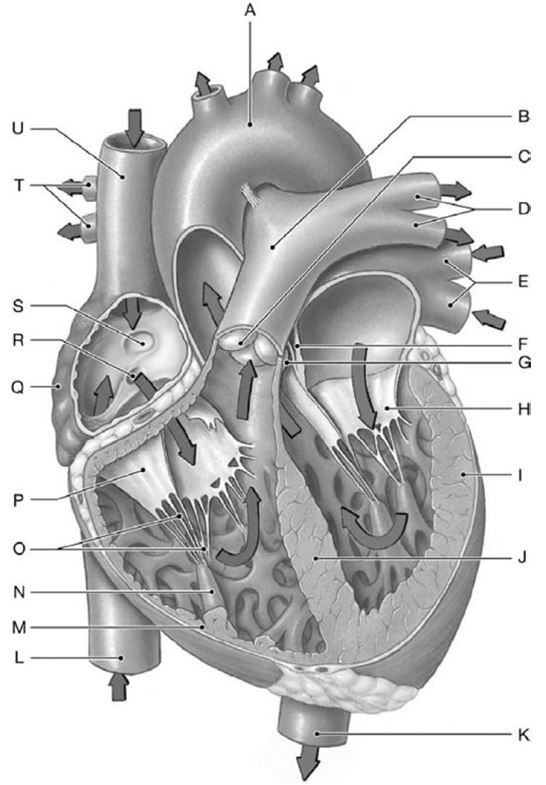Label O represents the

A) trabeculae carneae.
B) chordae tendineae.
C) auricle.
D) papillary muscle.
E) pectinate muscle.
B) chordae tendineae.
You might also like to view...
Cardiac tamponade refers to:
A) the effect of a pneumothorax on the heart. B) the buildup of fluid in the pericardial cavity that impedes the pumping of the heart. C) the rustle-of-silk sound heard in a stethoscope when there is pericarditis. D) pericardial calcification. E) pain from a heart attack.
Which nerve supplies the quadriceps femoris?
A. Pudendal B. Sciatic C. Tibial D. Femoral E. Musculocutaneous
What is the primary effect of a decrease in the hematocrit of elderly individuals?
a. reduction in the maximum cardiac output b. damage to ventricular cardiac muscle fibers c. lowering of the oxygen-carrying capacity of the blood d. thrombus formation in the blood vessels
During repolarization
A. sodium ions move inside the neuron. B. electrons stop moving along the axon. C. potassium ions move outside the neuron. D. chloride ions move outside the neuron.